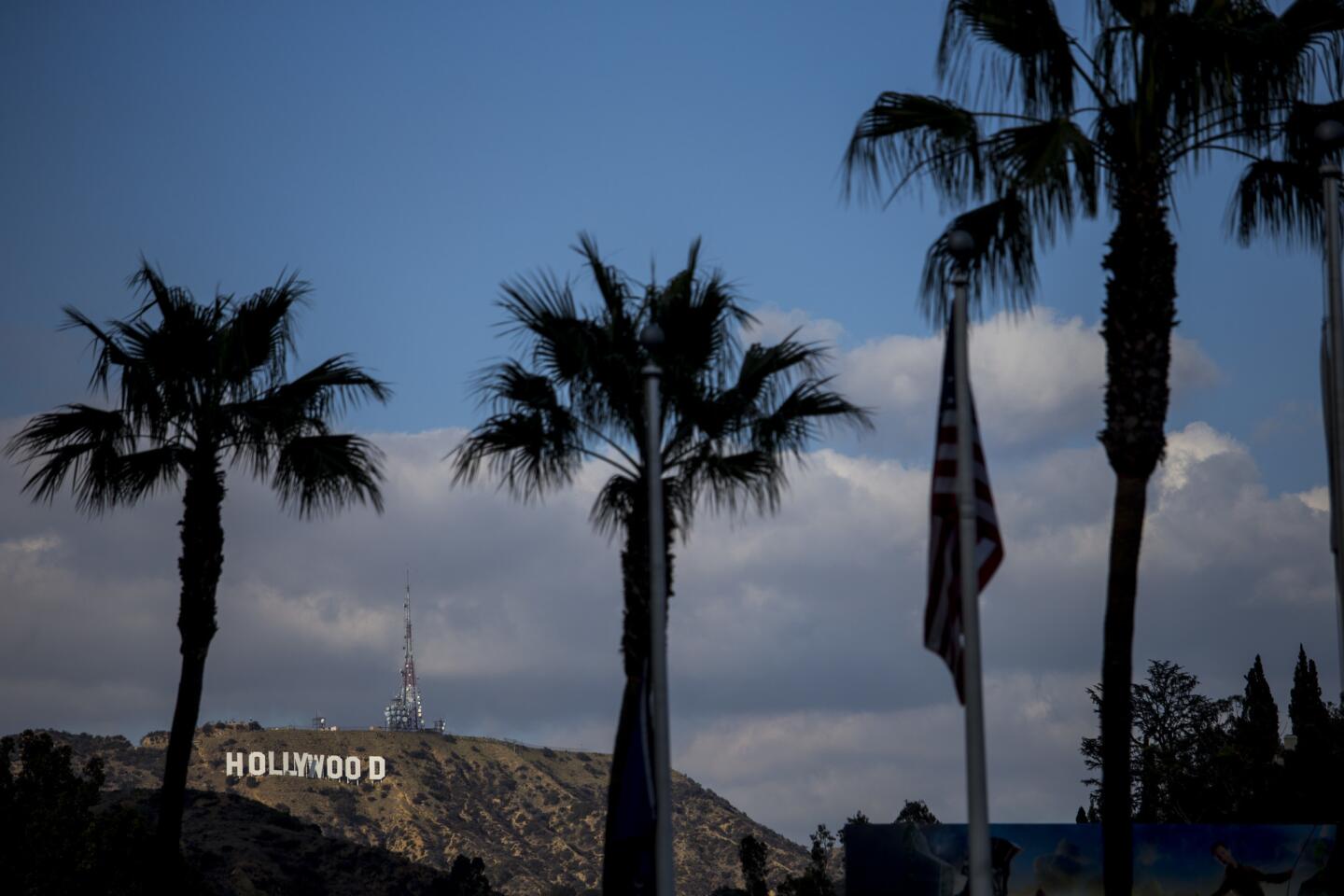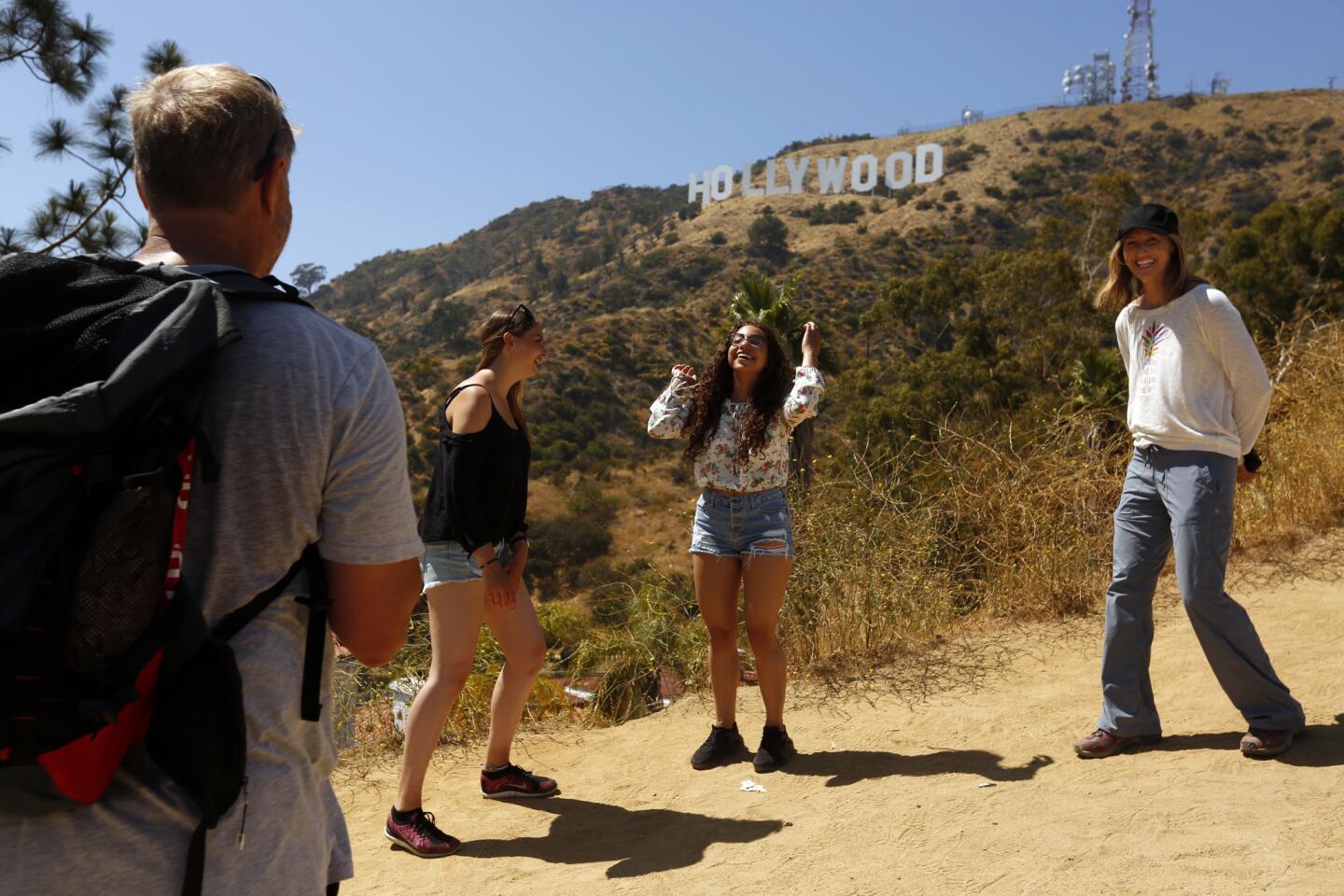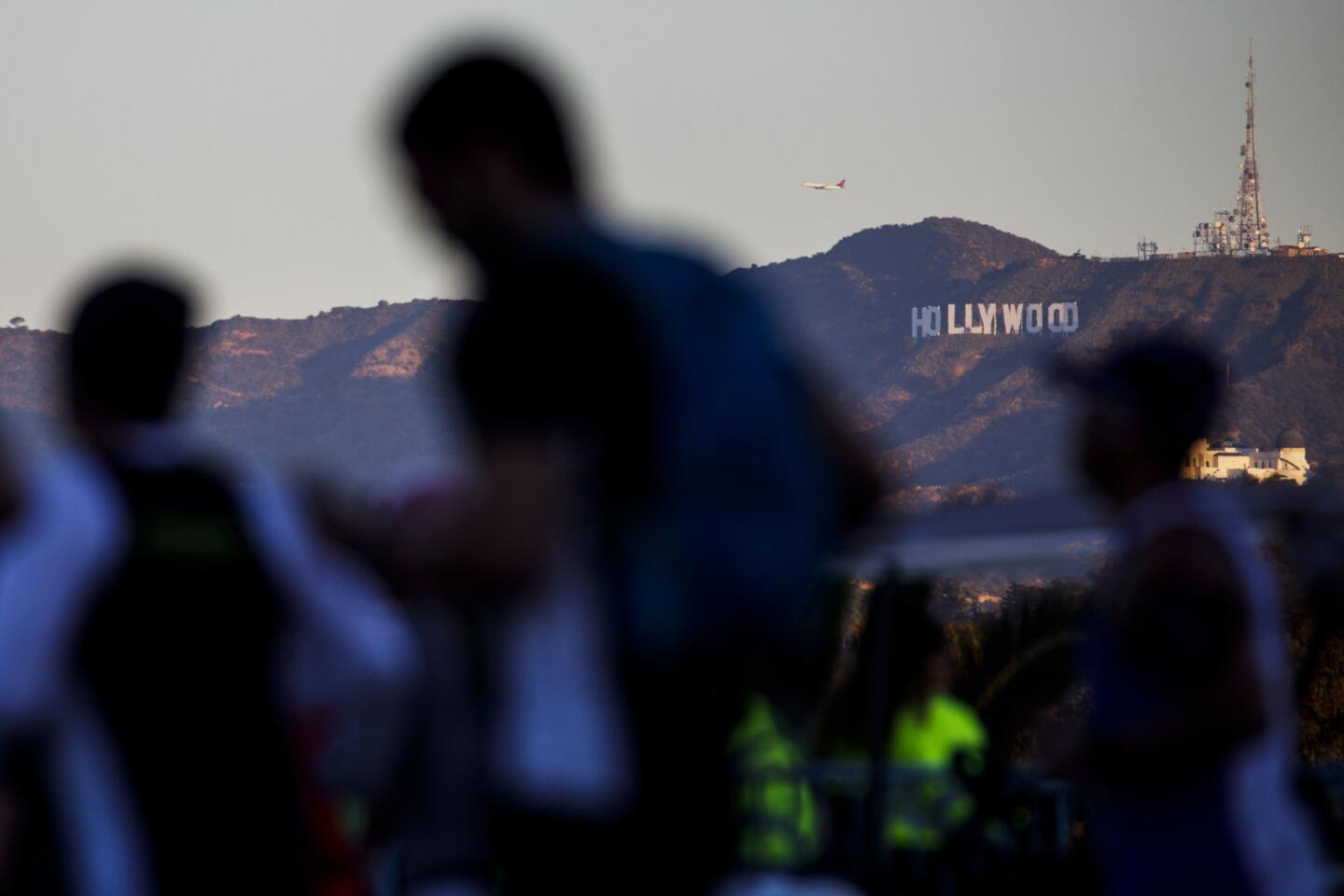Must Reads: Warner Bros. wants to build a $100-million aerial tramway to the Hollywood sign

The “Hollywood Skyway” would cost an estimated $100 million
- Share via
Residents of the hilly neighborhoods surrounding the famed Hollywood sign — the symbol of Los Angeles’ signature industry — have long blamed the attraction for worsening traffic, parking nightmares and disruptive tourists.
Now one of the movie and television business’ biggest players, Warner Bros., says it has a bold solution.
The 95-year-old studio on Monday told city officials it would foot the bill for an aerial tramway to transport visitors to and from the Hollywood sign, starting from a parking structure next to its Burbank lot.
The effort, dubbed the Hollywood Skyway, would cost the studio an estimated $100 million, according to a person close to the company who was not authorized to comment. The tramway would take visitors on a 6-minute ride more than 1 mile up the back of Mt. Lee to a new visitors center near the sign, with pathways to a viewing area.
The purpose, the AT&T-owned entertainment company said, is to give selfie-seeking visitors a way to see the famed letters without driving and hiking through residential neighborhoods, such as Beachwood Canyon.
The traffic problem has worsened in recent years with the rise of social media photo-sharing sites such as Instagram, ridesharing apps including Uber and Lyft, and navigation services such as Waze.
Similar solutions in the past have been shot down over concerns that they would lead to the commercial exploitation of Griffith Park. The Warner Bros. proposal will surely face tough questions from locals and a lengthy review process to assess the effects on the environment. Many have also voiced concerns about how such a project would affect wildlife in the area.
“There’s going to be a lot of people pushing for the tram for the relief it will provide the local residents,” said Gerry Hans, a board member for the nonprofit group Friends of Griffith Park. “But at the same time there are going to be people wanting to preserve Griffith Park for the great urban wilderness it is.”
Warner Bros. facilities head Jon Gilbert, who is leading the effort, said the company had taken pains to make sure the proposed project would minimize the effect on wildlife and avoid obstructing views of the sign from elsewhere in the city. Solving the seemingly intractable problem will take innovative thinking, he said.
“This requires a bold solution,” Gilbert said in an interview. “If we really want to make a difference ... it’s got to be something compelling. Partial solutions are not going to do the trick, and people will continue to inundate the neighborhoods.”
Providing a means to access the iconic sign could also help lure more tourists to Warner Bros., which in 2015 invested $13 million to build a new set of interactive attractions and exhibits on its Burbank backlot to grab a larger share of L.A.’s tourism business.
The idea of an aerial tram to the Hollywood sign has been floated numerous times over the years as a way to draw tourists away from the residential areas and raise revenue for the city.
Mayor Eric Garcetti revived the concept in May 2017, saying a gondola could come from the Universal Studios area. Investor and philanthropist Alex von Furstenberg, son of fashion designer Diane von Furstenberg, is spearheading another effort to build a Hollywood sign gondola that would begin from a location that has yet to be determined.
In the past, tramway proposals have been scoffed at by community members, Hollywood Chamber of Commerce President Leron Gubler said. But the notion has gained traction as GPS navigation systems have sent more tourists into nearby neighborhoods. A private company recently proposed a similar system to take passengers to Dodger Stadium from Union Station.
“Warner Bros. coming out with a concrete proposal increases the feasibility and brings it some credibility,” Gubler said. “It should be able to reroute a significant amount of people going up into the neighborhoods.”
The offer comes as city officials are searching for solutions. A January report commissioned by Councilman David Ryu suggested creative ways to solve the Hollywood sign-related traffic problems, including an aerial tram. It also proposed such measures as extended shuttle routes and designating ridesharing zones at popular viewpoints. An audacious idea to build a second sign on the opposite side of the mountain was ultimately shot down.
The sign — first erected in 1923 to read “Hollywoodland” — remains a powerful draw for tourists but is notoriously difficult to visit up close. The controversy over the sign flared up last year when the city cut off access to a Beachwood Drive gate leading to a popular trail near the sign. But efforts to restrict tourists’ access from certain prime locations have done little to keep visitors at bay.
Some longtime residents have questioned how effective proposed trams will be, wondering why tourists would choose to pay to see the sign when they’re used to having free views from parts of the city. But local resident Christine O’Brien said she supports the idea, in theory.
“On paper, it sounds good,” O’Brien said. “We desperately need something.”
Warner Bros. began considering the project more than a year ago. Studio finance executive Gil Breakman, a frequent hiker in the Griffith Park and Hollywood Hills area, approached Gilbert about using one of the studio’s parking structures as the starting point for a tramway after hearing about Garcetti’s remarks about a potential gondola.
The proposed aerial lift would start at Warner Bros.’ parking structure at 6510 Forest Lawn Drive, adjacent to the studio lot, where the company does audience staging for talk shows and sitcoms. The visitors center near the sign would educate visitors on the history of the sign and the environmental significance of Griffith Park.
Under the proposal, the studio would share ticketing revenue with the city to support park activities, the company said in a letter to Los Angeles Recreation and Parks Department General Manager Michael Shull and Chief Legislative Analyst Sharon Tso. Warner Bros. did not say how much it might charge for the tram ride.
The project is likely to take about five years to complete, including the planning, environmental review process and construction, Gilbert said.
Several months ago, Gilbert said, he and a group of Warner Bros. executives drove to Lake Hollywood Park to observe the heavy traffic near the popular landmark. He saw one driver wave a selfie stick while trying to steer a red convertible, he said.
“We know the problem is getting worse, and the city is looking for a solution,” he said. “We believe we’re uniquely qualified. We’ve been around a long time, we’re local, and we believe we have a good answer.”
More to Read
Inside the business of entertainment
The Wide Shot brings you news, analysis and insights on everything from streaming wars to production — and what it all means for the future.
You may occasionally receive promotional content from the Los Angeles Times.
















